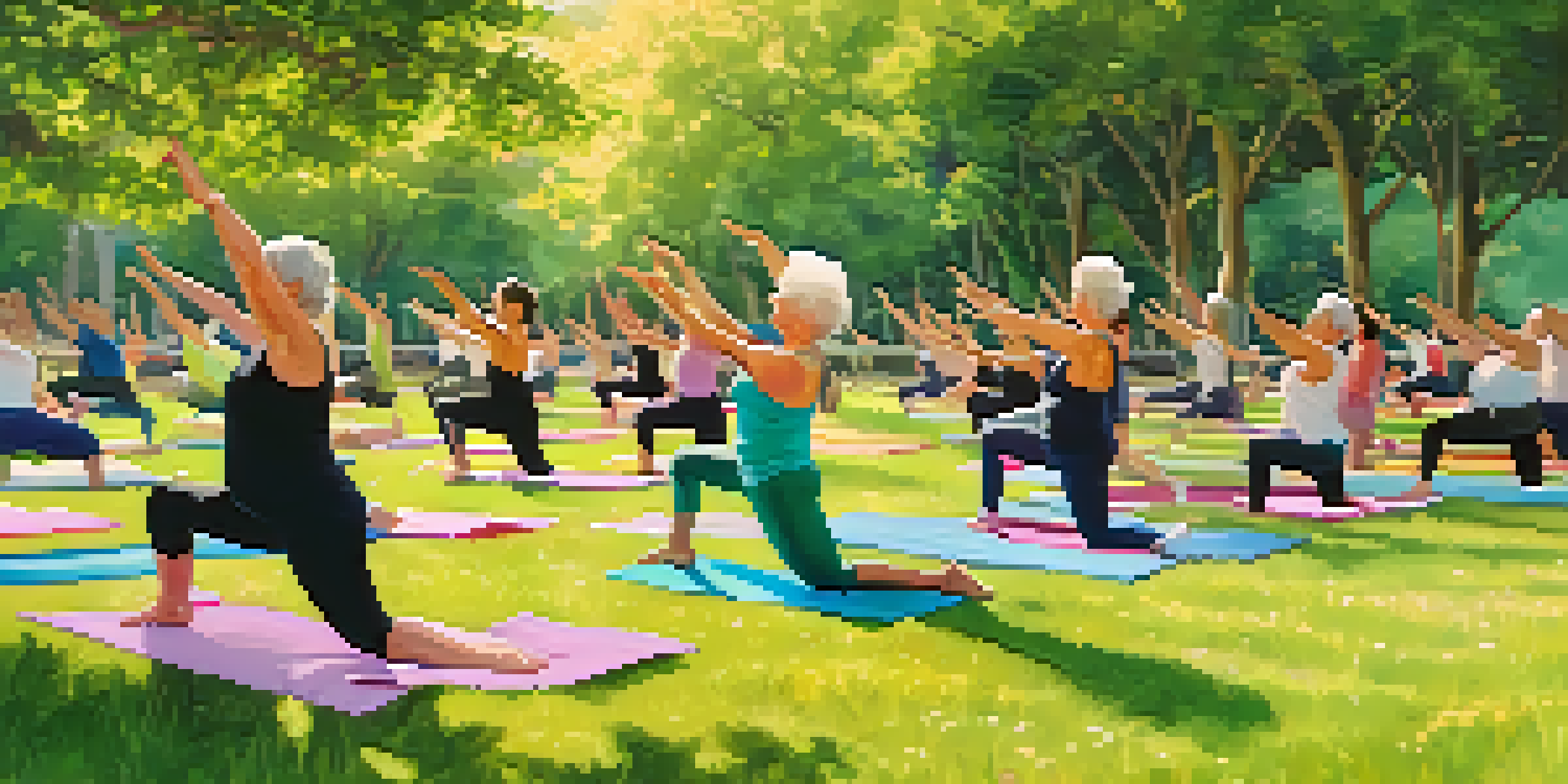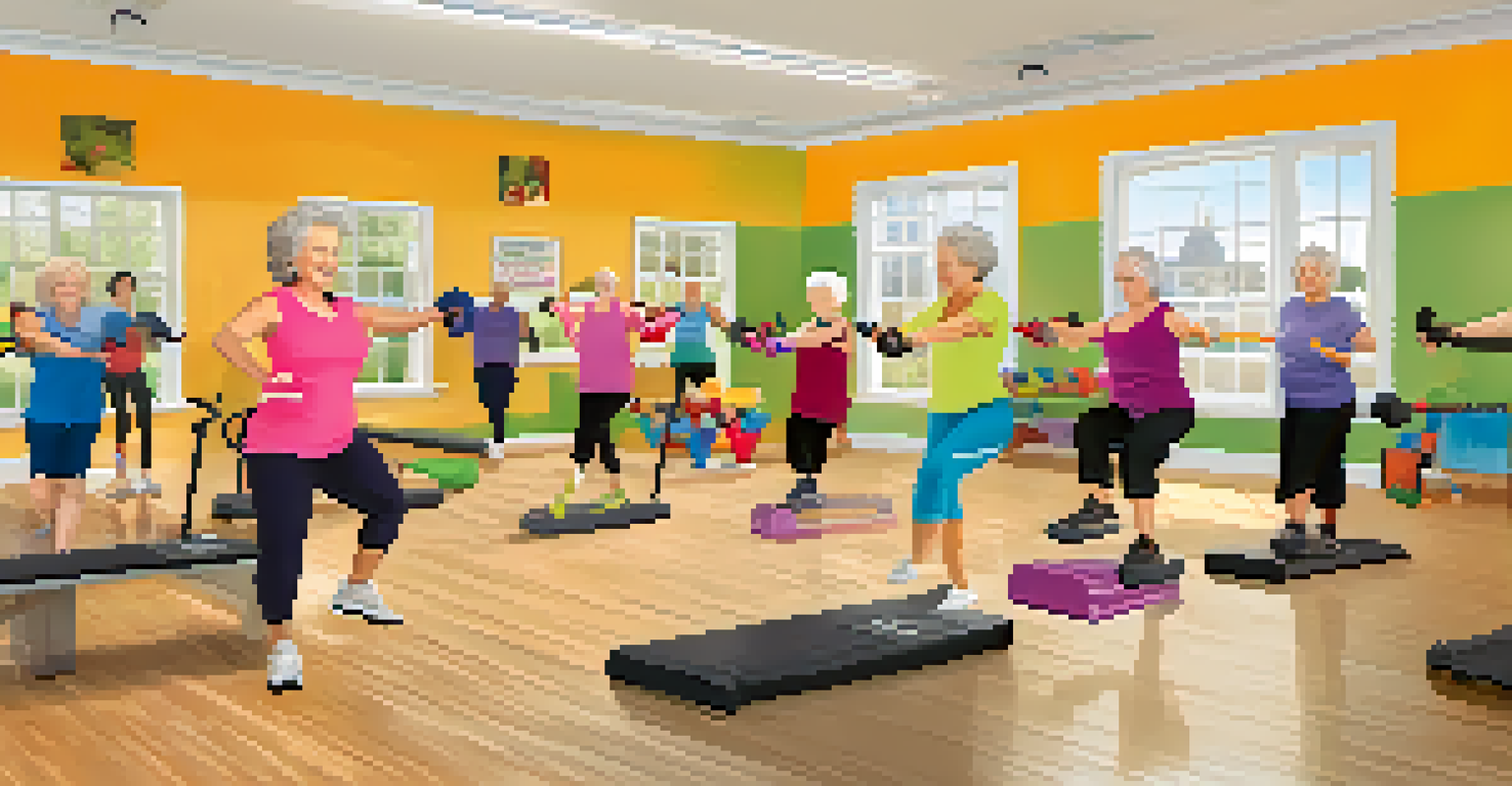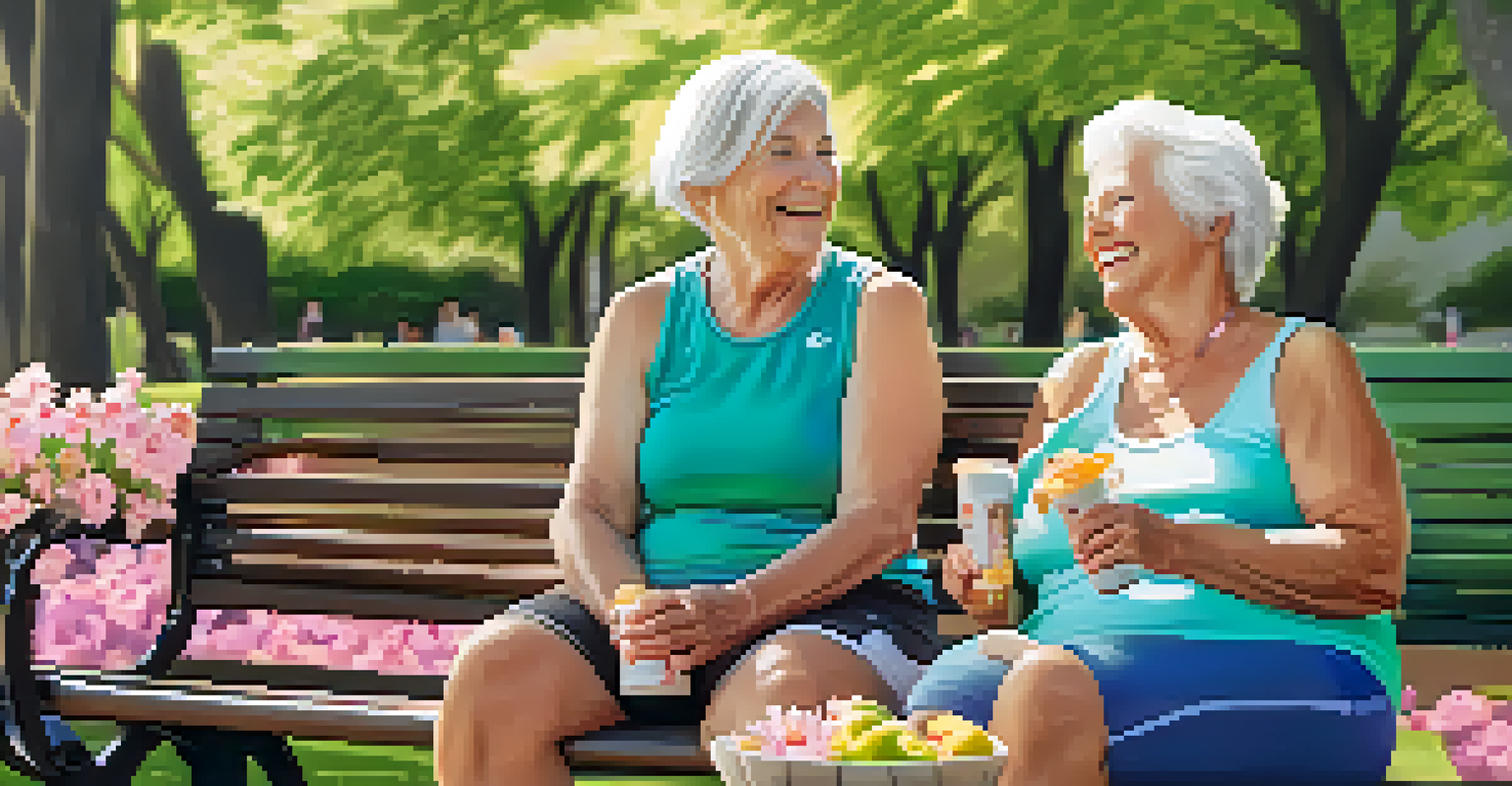Group Exercise Benefits for Seniors: Fostering Community Spirit

Why Group Exercise is Perfect for Seniors
Group exercise offers a welcoming environment for seniors, making it easier to stay active. Unlike solo workouts, group classes provide motivation and accountability, which can be particularly beneficial for older adults. The social aspect of exercising in a group helps create a sense of belonging, making physical activity more enjoyable.
The greatest gift you can give to others is the gift of unconditional love and acceptance.
Additionally, these sessions are designed to cater to various fitness levels, ensuring everyone can participate safely. From gentle yoga to low-impact aerobics, there’s something for everyone. This inclusivity helps seniors feel valued and capable, boosting their confidence in their physical abilities.
Moreover, group exercises often incorporate fun elements that can spark joy and laughter. This positive atmosphere can lift spirits and foster friendships, encouraging seniors to return regularly and maintain their active lifestyle.
Building Connections and Friendships
One of the most significant benefits of group exercise is the opportunity to meet new people. As seniors participate in classes, they often form bonds with fellow participants, creating a support network. These connections can lead to friendships that extend beyond the gym, enriching their lives in various ways.

Having a workout buddy can make exercising more enjoyable and less intimidating. It’s much easier to show up for a class when you know someone else will be there. This camaraderie not only encourages attendance but also enhances commitment to fitness goals.
Furthermore, these friendships can provide emotional support, which is crucial for overall well-being. Sharing experiences and challenges with others can help seniors feel less isolated, combating feelings of loneliness that often come with aging.
Enhancing Physical Health through Group Workouts
Regular participation in group exercise can significantly improve physical health among seniors. Engaging in activities like strength training, stretching, and cardiovascular workouts helps maintain mobility and flexibility. This can lead to a more independent lifestyle and reduced risk of injury.
Exercise is a celebration of what your body can do. Not a punishment for what you ate.
Group classes are often led by certified instructors who understand the unique needs of older adults. They can provide modifications and ensure that exercises are performed safely. This professional guidance allows seniors to push their limits while staying within a safe range.
Moreover, group workouts can also motivate seniors to try new activities they might not attempt alone. Exploring various forms of exercise can keep fitness routines fresh and exciting, ultimately leading to better long-term health outcomes.
Boosting Mental Well-Being through Community
Exercise is not just about physical health; it plays a crucial role in mental well-being too. Group exercise can reduce symptoms of anxiety and depression, which are common in seniors. The combination of physical activity and social interaction releases endorphins, the body’s natural mood lifters.
Being part of a community also instills a sense of purpose and belonging. When seniors feel connected to others, it can enhance their overall quality of life. This social engagement is vital for mental health, helping to keep cognitive decline at bay.
Additionally, sharing laughter and stories during workouts can create a positive atmosphere that uplifts spirits. This social and emotional support can be just as important as the physical benefits of exercise.
Cultivating a Routine with Group Activities
Establishing a regular exercise routine can be challenging, but group classes make it easier. Scheduled sessions create a commitment, helping seniors prioritize their health. The consistency of attending a class at the same time each week can cultivate healthy habits that last.
Having a set time to meet with others can motivate seniors to adhere to their fitness plans. This routine fosters accountability, making it less likely for individuals to skip sessions. The encouragement from peers can also help push through days when motivation is low.
In this way, group exercise not only benefits physical health but also helps seniors build a sustainable lifestyle. The long-term impact of maintaining an active routine can lead to lasting health improvements and enhanced well-being.
Adapting to Individual Needs in a Group Setting
While exercising in a group, it's essential to recognize that each participant has unique needs. Good instructors adapt exercises to accommodate various fitness levels and health concerns. This personalization ensures that everyone feels included and can participate safely.
Seniors can learn from one another’s experiences, sharing tips and strategies that work for them. This exchange of knowledge enriches the group dynamic and fosters an environment of support. It also empowers seniors to take charge of their health by understanding their bodies better.
Moreover, adapting exercises in a group setting can enhance motivation. When seniors see others overcoming challenges, it inspires them to push their limits and try new things, reinforcing a positive cycle of growth and improvement.
Creating a Lasting Impact on Community Health
The benefits of group exercise extend beyond individual participants; they can positively impact the entire community. When seniors engage in fitness programs, they contribute to a culture of health and wellness that inspires others. This collective effort can lead to an overall healthier population.
Communities that prioritize group exercise often see decreased healthcare costs as residents become healthier and more active. Reducing the prevalence of chronic diseases among seniors can alleviate pressure on local healthcare systems. A vibrant, active senior population is also likely to engage more in community life.

Ultimately, fostering a community spirit through group exercise creates a ripple effect. It encourages intergenerational connections and promotes a shared commitment to health, benefiting everyone involved.
Conclusion: The Power of Group Exercise for Seniors
Group exercise is more than just a way to stay fit; it's a powerful tool for fostering community among seniors. The connections formed in these classes can enhance physical health and improve mental well-being. With the right guidance, seniors can engage in safe, effective workouts that cater to their individual needs.
By participating in group exercise, seniors not only improve their health but also build lasting friendships and support networks. This sense of community can combat loneliness and ensure that they have a fulfilling social life.
In the end, embracing group exercise is a step towards a healthier, happier, and more connected life for seniors. Encouraging this active lifestyle benefits individuals and strengthens the community as a whole.